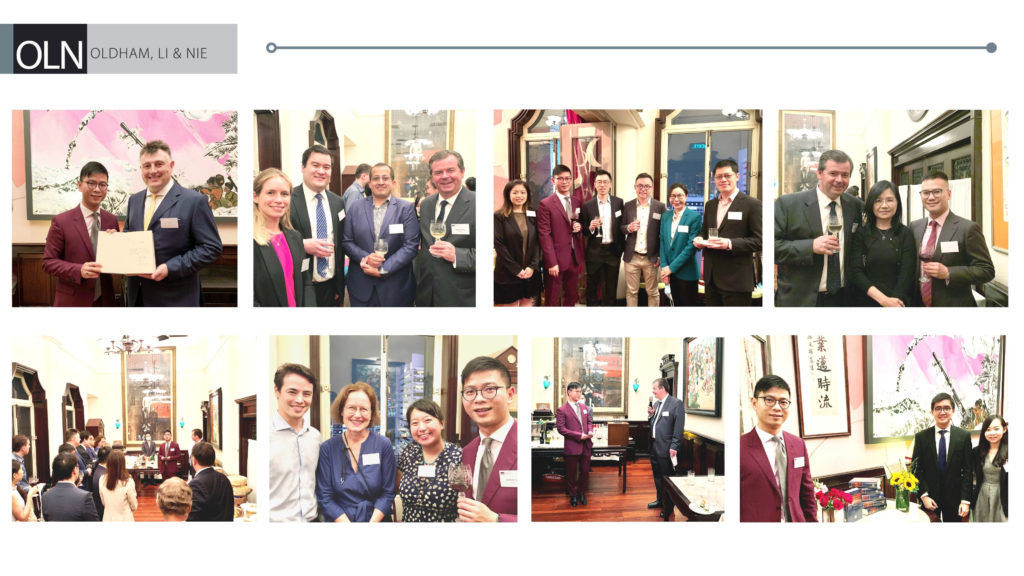Speech at Launch Reception of the Book “International Commercial Arbitration” on 29 October 2021
Good Evening, Ladies and Gentlemen,
It is our great honour to have such a distinguished group of guests from the arbitration community to join us at this book launch reception this evening. It is not easy to plan and organise any activity during Covid and this reception has been postponed since the start of the year when the book was actually published. We are glad to have this event at the end of the HK Arbitration Week 2021. Thank you all for joining us tonight.
I would also like to thank OLN for generously sponsoring this event. Thank you Justin Chow for booking this venue for us. Thank you Philip Kwok for writing the review of the Hong Kong Chapter.
Last but not least, I would like to thank my co-author Amy Lo who gave me the opportunity to update the second edition of the Hong Kong Chapter. Amy is my university senior and we have remained friends since. She has moved to the US so she cannot be with us tonight.
As she moved to the US, she asked me “Dantes, would you like to update the Hong Kong Chapter of International Commercial Arbitration? There is not much royalty by the way.” “Sure!” I replied – I had no idea about the workload of this voluntary assignment. Then I spent the next 6 months on reviewing the case authorities in the past 4 years or so and updating the existing state of the law on arbitration.
Arbitration is perhaps the only area of the law that the Court takes a laissez-faire approach. Because of the well-known guiding policies of pro-arbitration and non-intervention by the Court, there are a lot of interesting developments in arbitration. Whilst these guiding policies provide almost a knee-jerk kind of default explanation to nearly every arbitration case, I have wondered for many years how far these guiding policies could go.
For example, under the Lasmos line of authorities, it is possible as a matter of Hong Kong law to petition to wind up a company on a debt governed by an arbitration clause. There is no automatic stay of the petition. Commentators justified this by reference to pro-arbitration support by the Court. As we all know, winding-up petition is a powerful tool to squeeze payment from debtors. The argument is that no one would use arbitration if winding-up petitions are not available for arbitration-governed contracts.
Fair enough – but one wonders why a Court should wind up a company on a debt governed by arbitration, when the arbitral tribunal could determine that the debt actually does not exist. So far I have not heard any logical response to that. This is the gist of the article I published in May 2020, and you will receive a copy in a folder when you leave. There are more developments on this issue, and my team member Flora Ng is in the process of drafting an update article on this.
Halliburton is another hot case. In Halliburton, the UK Supreme Court held that an arbitrator has a duty to disclose multiple overlapping appointments with one common party, which may give rise to an appearance of bias. Although the arbitrator in that case failed that duty, the Supreme Court upheld his appointment. Again, commentators explained this by reference to non-intervention and pro-arbitration by the Court.
However, is it not strange that the innocent party was left without any remedy when an arbitrator breached his duty? I thought the legal maxim that “there is no wrong without a remedy” should always prevail. With all due respect, we have identified where Lord Hodge fell into error in his analysis in Halliburton. My team member Davis Hui is drafting an article on this issue.
In the recent case of C v. D, the Hong Kong Court held that the multi-tiered arbitration clause goes to admissibility rather than jurisdiction of the arbitral tribunal, unless otherwise clearly stated. Of course, it might be easily justified by the so-called “pro-arbitration” approach.
But as we all know, arbitration clause is often added last minute at the end of the deal process, often without much negotiation. The parties have already taken pains to set out the details of the dispute resolution mechanism, i.e. by negotiation/mediation first before arbitration. In these circumstances, I would have thought that the parties’ clear intention is not to go to arbitration unless and until the negotiation/mediation requirement is complied with. It seems impracticably onerous for the Court to require the parties to state explicitly that multi-tiered arbitration clause should go to jurisdiction.
You will still hear from us on these interesting developments.
Ladies and gentlemen, this event tonight reminds me of a similar inaugural event I had some 13 years ago, when a group of relatively younger, more enthusiastic and energetic legal professionals formed a group called Denning’s Bench to try to publish periodic articles. Lord Denning of course needs no introduction. To me, Lord Denning is most admirable for his ability to think out of the box, and out of the existing confines of the Stare Decisis, in pursuit of pure logical reasoning.
Anyway, the 6 Dennings’ Benchers perhaps naïvely believed that we could each publish 2 articles a year so the whole group would have one article per month. Needless to say, we were soon crushed by the reality of private practice. However, I still think that with more peers, this is a doable project. So if you are interested in contributing to the development of the law by writing articles on any topic really, and if you are looking for collaboration, please speak with us!
On that note, thank you once again for coming. I hope you enjoyed this event and we hope to see you again at the Arbitration Week next year.

 香港中環雪厰街二號聖佐治大廈五樓503室
香港中環雪厰街二號聖佐治大廈五樓503室 +852 2868 0696
+852 2868 0696
















